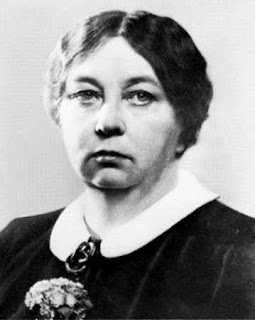Nocturno de Chile (Anagrama, 2009)
por Roberto Bolaño
España, 2000
"Ahora me muero, pero tengo muchas cosas que decir todavía" (11). Así empieza la confesión de Sebastián Urrutia Lacroix, un sacerdote chileno con fiebre que va a pasar las próximas 140 páginas (y un sólo párrafo) "aclarando algunos puntos" sobre su vida. Aunque Urrutia Lacroix dice que habla con la conciencia limpia, la trayectoria de su historia nos hace creer que no es exactamente así. Durante su larga oración febril, el cura admite haber querido ser un poeta y un crítico literario. Recuerda conocer a Pablo Neruda en el fundo de un tal Farewell, el crítico más conocido de la época. Más tarde, habla de sus viajes en Europa como miembro del Opus Dei. Dice que dictó conferencias sobre el marxismo para Pinochet y sus generales. Cerca del final, intenta disculparse por haber asistido a las tertulias a la casa de una pareja, Jimmy Thompson y María Canales, cuyo sótano funcionaba como un centro de interrogatorios de la DINA (Dirección de Inteligencia Nacional). A pesar de la estructura minimalista de la novela (es una obra donde los silencios frecuentemente hablan con más fuerza que lo dicho), Bolaño logra crear un ambiente verdaderamente escalofriante. El fundo de Farewell, llamado
Là-bas en homenaje a la novela de Huysmans, no es la única pista. Mandado a Europa para preparar un informe sobre la destrucción de las iglesias, Urrutia Lacroix revela que la amenaza principal viene del excremento de los pájaros. La solución, brutal y eficaz a la vez, es la de emplear aves de rapiña para cazar a las palomas (con una muestra de humor negro, el halcón de la parroquia de Burgos se llama Rodrigo). Si es difícil ignorar los paralelos históricos con la Operación Condor establecida por Pinochet y sus secuaces, las dimensiones políticas se magnifican cuando uno se da cuenta que Thompson y su esposa probablemente están modeladas sobre el norteamericano Michael Vernon Townley, un ex agente de la CIA vinculada con DINA, y la chilena Mariana Callejas
*. "Así se hace la literatura en Chile", dice el protagonista en un momento. "Pero no sólo en Chile, también en Argentina y en México, en Guatemala y en Uruguay, y en España y en Francia y en Alemania, y en la verde Inglaterra y en la alegre Italia. Así se hace la literatura" (147). Si todavía prefiero
Estrella distante entre todas las novelas cortas de Bolaño que he leído hasta ahora, ya les puedo recomendar este nocturno suyo sin vacilar un momento. Es deprimente pero rebueno. (
http://www.anagrama-ed.es/)
*Gracias a Trevor, del blog
The Mookse and the Gripes, por la información sobre Mariana Callejas.

"Yo voy a releer a los griegos. Empecé con Homero, como manda la tradición, y seguí con Tales de Mileto y Jenófanes de Colofón y Alcmeón de Crotona y Zenón de Elea (qué bueno era), y luego mataron a un general del ejército favorable a Allende y Chile restableció relaciones diplomáticas con Cuba y el censo nacional registró un total de 8.8884.768 chilenos y por la televisión empezaron a transmitir la telenovela El derecho de nacer, y yo leí a Tirteo de Esparta y a Arquíloco de Paros y a Solón de Atenas y a Hiponacte de Éfeso y a Estesícoro de Himera y a Safo de Mitilene y a Teognis de Megara y a Anacreonte de Teos y a Píndaro de Tebas (uno de mis favoritos), y el gobierno nacionalizó el cobre y luego el salitre y el hierro y Pablo Neruda recibió el Premio Nobel y Díaz Casanueva el Premio Nacional de Literatura y Fidel Castro visitó el país y muchos creyeron que se iba a quedar a vivir acá para siempre y mataron al ex ministro de la Democracia Cristiana Pérez Zujovic y Lafourcade publicó Palomita blanca y yo le hice una buena crítica, casi una glosa triunfal, aunque en el fondo sabía que era una novelita que no valía nada, y se organizó la primera marcha de las cacerolas en contra de Allende y yo leí a Esquilo y a Sófocles y a Eurípides, todas las tragedias, y a Alceo de Mitilene y a Esopo y a Hesiodo y a Heródoto (que es un titán más que un hombre), y en Chile hubo escasez e inflación y mercado negro y largas colas para conseguir comida y la Reforma Agraria expropió el fundo de Farewell y muchos otros fundos y se creó la Secretaría Nacional de la Mujer y Allende visitó México y la Asamblea de las Naciones Unidas en Nueva York y hubo atentados y yo leí a Tucídides, las largas guerras de Tucídides, los ríos y las llanuras, los vientos y las mesetas que cruzan las páginas oscurecidas por el tiempo, y los hombres de Tucídides, los hombres armados de Tucídides y los hombres desarmados, los que recolectan la uva y los que miran desde una montaña el horizonte lejano, ese horizonte en donde estaba yo confundido con millones de seres, a la espera de nacer, esa horizonte que miró Tucídides y en donde yo temblaba, y también releí a Demóstenes y a Menandro y a Aristóteles y a Platón (que siempre es provechoso), y hubo huelgas y un coronel de un regimiento blindado intentó dar un golpe y un camarógrafo murió filmando su propia muerte y luego mataron al edecán naval de Allende y hubo disturbios, malas palabras, los chilenos blasfemaron, pintaron las paredes, y luego casi medio millón de personas desfiló en una gran marcha de apoyo a Allende, y después vino el golpe de Estado, el levantamiento, el pronunciamiento militar, y bombardearon La Moneda y cuando terminó el bombardeo el presidente se suicidó y acabó todo. Entonces yo me quedé quieto, con un dedo en la página que estaba leyendo, y pensé: qué paz". (Nocturno de Chile, 97-99)
*Trevor of The Mookse and the Gripes has kindly permitted me to link to his review of the English translation of Bolaño's novel. Please click here for a great post on By Night in Chile.






.jpg)

























